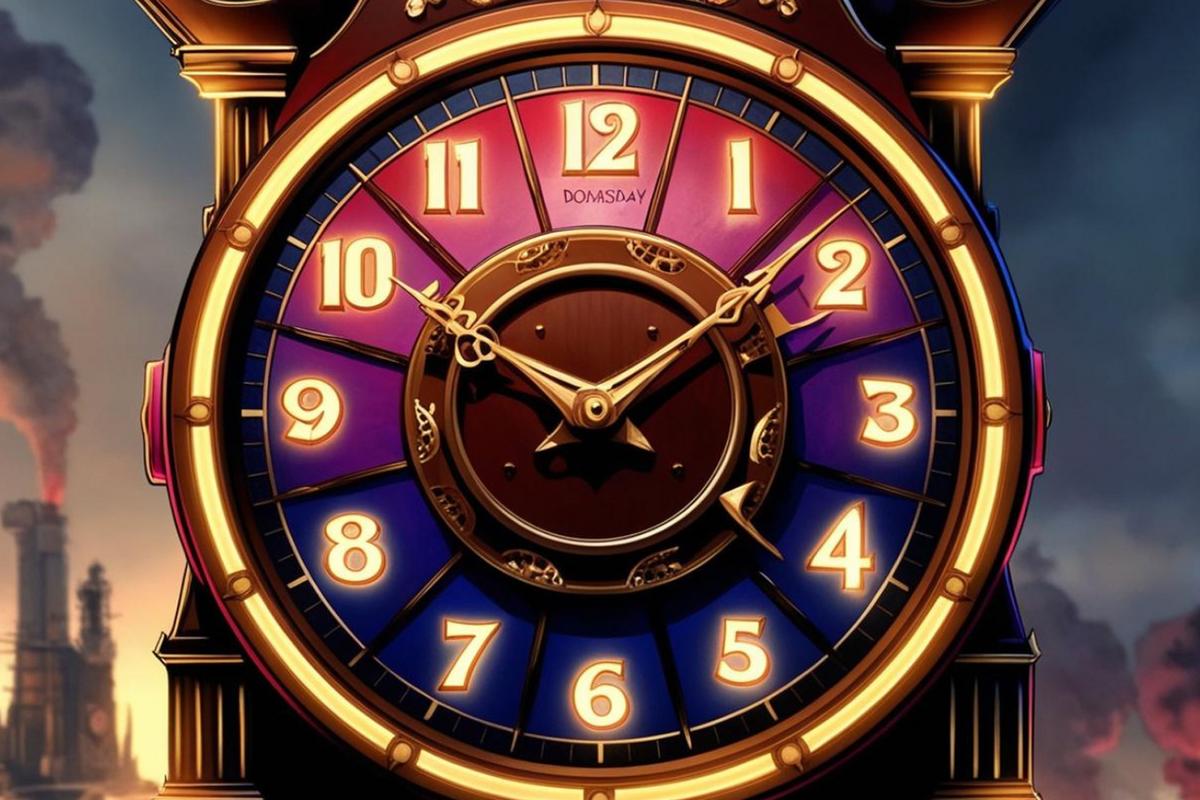Scientists have changed the time on what’s known as the Doomsday Clock, which uses various predictors to gauge how close humanity might be to extinction.
The Science and Security Board (SASB) of the Bulletin of the Atomic Scientists moved the clock to 89 seconds to midnight at a press conference on Tuesday (Jan. 28), marking the closest it’s ever been to predicting global disaster on a mass scale for humankind.
The SASB moves the hands on the Doomsday Clock every year in response to various sociopolitical and natural conditions around the world, in close consultation with their board of sponsors, which includes nine Nobel Laureates, as Newsweek reports.
The board’s chair, Daniel Holz, cited countries that are investing in developing nuclear weapons, the lack of a solid plan in combating global warming, and the rise of unregulated new advances in biotechnology, artificial intelligence and space exploration as factors in the decision.
Holz stated that the rising spread of misinformation, disinformation and conspiracy theories make the underlying issues worse.
According to the organization’s website, “In setting the Clock one second closer to midnight, the Science and Security Board sends a stark signal: Because the world is already perilously close to the precipice, a move of even a single second should be taken as an indication of extreme danger and an unmistakable warning that every second of delay in reversing course increases the probability of global disaster.”
The board previously reset the clock at 90 seconds to midnight in January of 2024, which at that time marked the closest it had been to midnight since its inception in 1947.
The President and CEO of the Bulletin, Rachel Bronson, tells Newsweek, “The Doomsday Clock is about urgency not fear. The design is a metaphor that warns the public about how close we are to destroying our world with dangerous technologies of our own making, and the discussion points the public to the underlying issues driving that threat and the solutions to combat them.”
“That means that we move the clock to reflect the state of the world in hopes of influencing public perception to match that reality, rather than trying to reflect public perception of reality. Because it is symbol rather than an exact formula, we know that our decisions can be debated and we hope that further drives discussion around issues of existential threat.”
See the Most Played Country Song from the Year You Were Born
Who had the most played country song during the year you were born? This list is a fascinating time capsule of prevalent trends from every decade in American history. Scroll through to find your birth year and then click to listen. Some of these songs have been lost through the years, many of them for good reason!
Gallery Credit: Billy Dukes
Most Popular Country Album From the Year You Were Born
Find out which country singer dominated on this list of the most popular albums from the year you were born or graduated high school.
This list is based on sales date from the Soundscan era (1991 to 2022) and total weeks spent atop Billboard‘s Hot Country Albums chart (1964-1990).
Gallery Credit: Billy Dukes
Crazy Country Facts From the Year You Were Born
Gallery Credit: Abby Monteil
Sterling Whitaker is a Senior Writer and Senior Editor for Taste of Country. He focuses on celebrity real estate, as well as coverage of Yellowstone and related shows like 1883 and 1923. He’s interviewed cast members including Cole Hauser, Kelly Reilly, Sam Elliott and Harrison Ford, and Whitaker is also known for his in-depth interviews with country legends including Don Henley, Rodney Crowell, Trace Adkins, Ronnie Milsap, Ricky Skaggs and more.




Leave a Comment